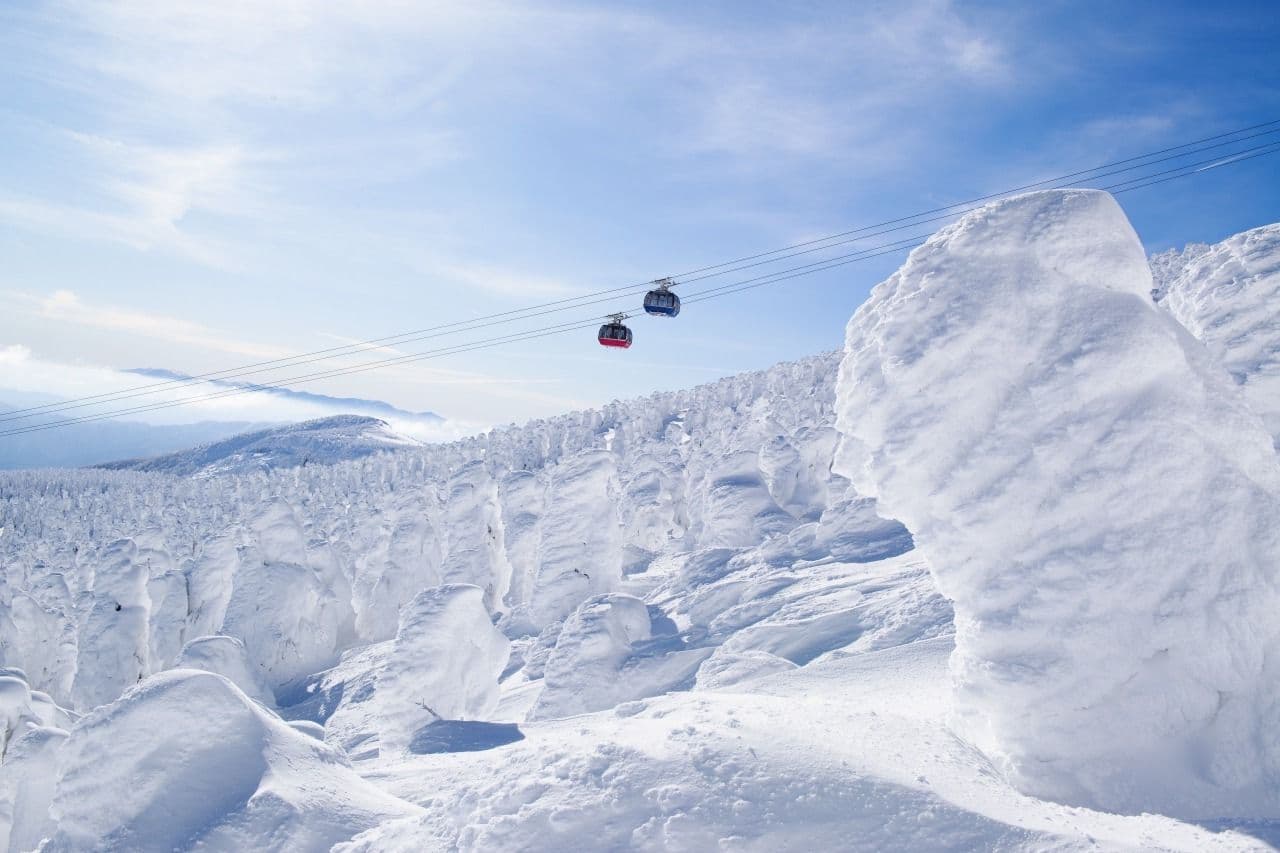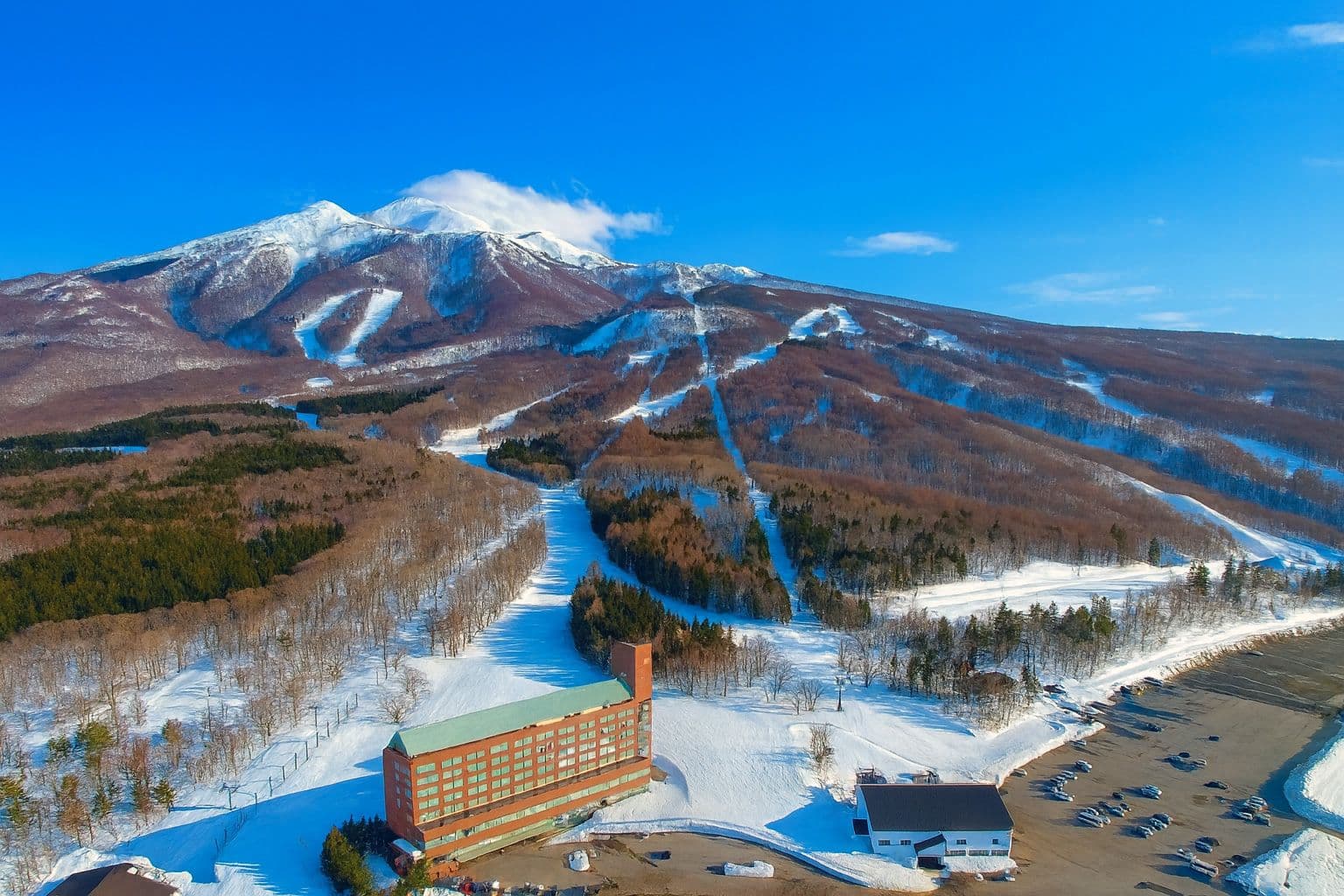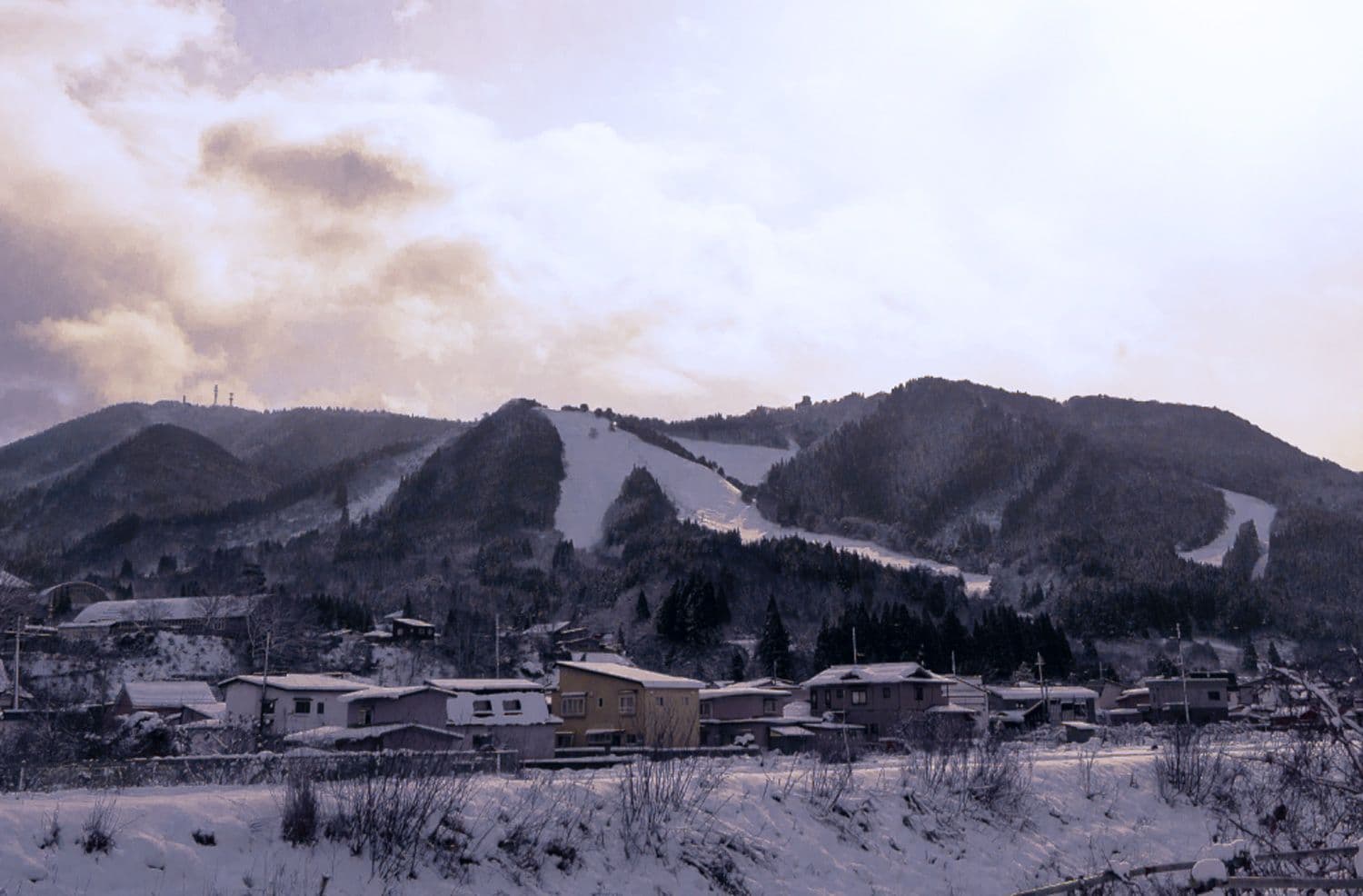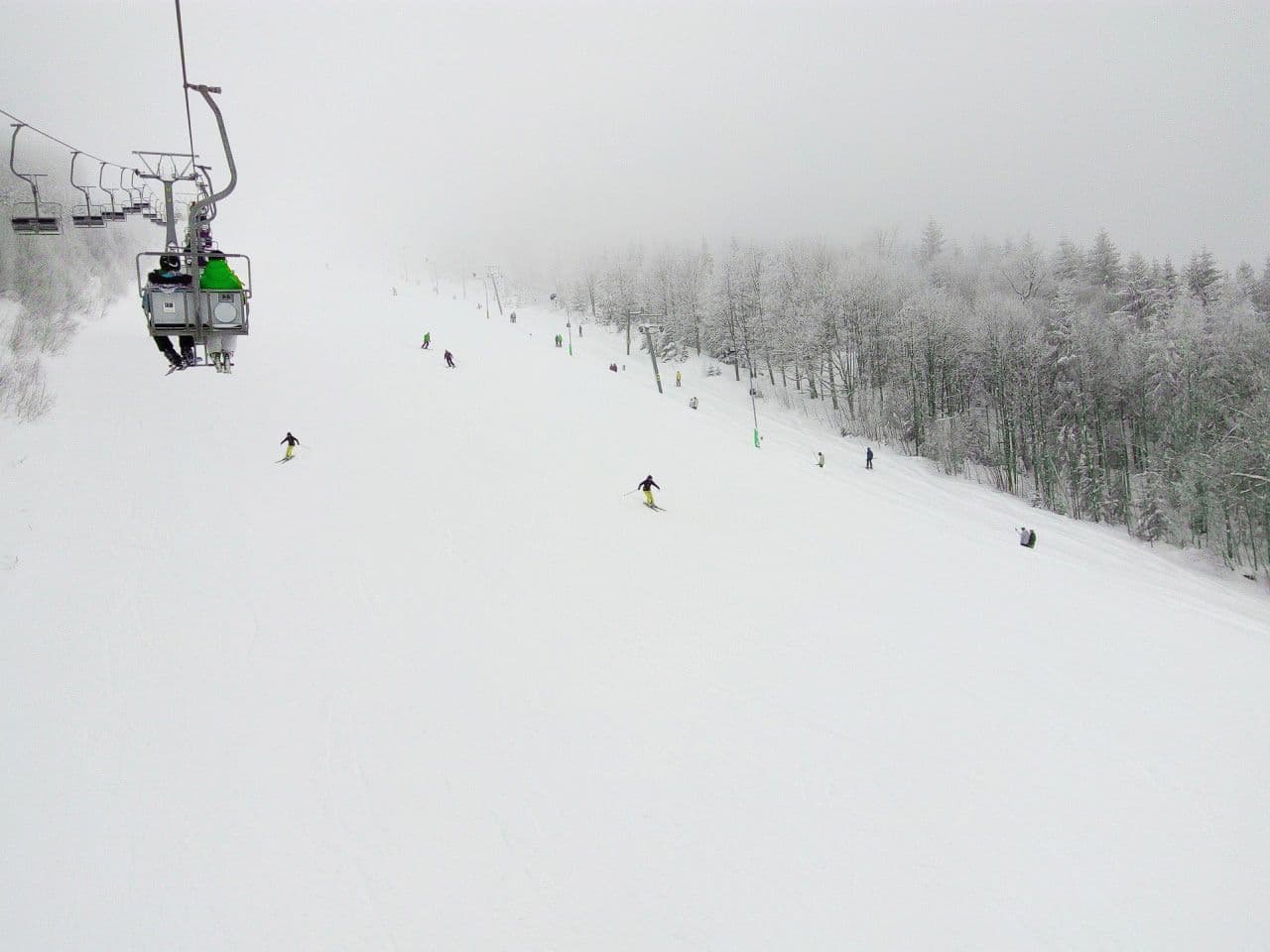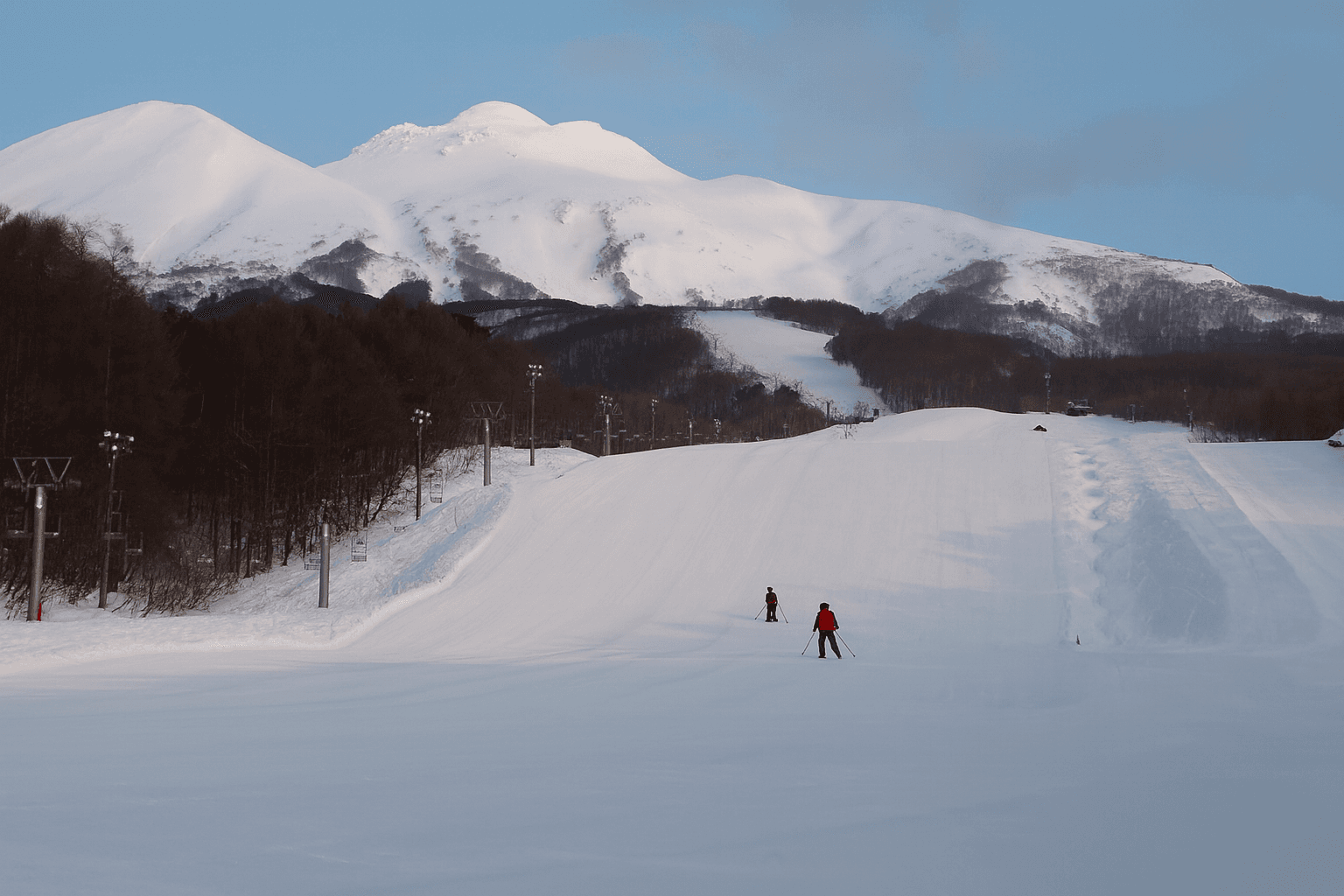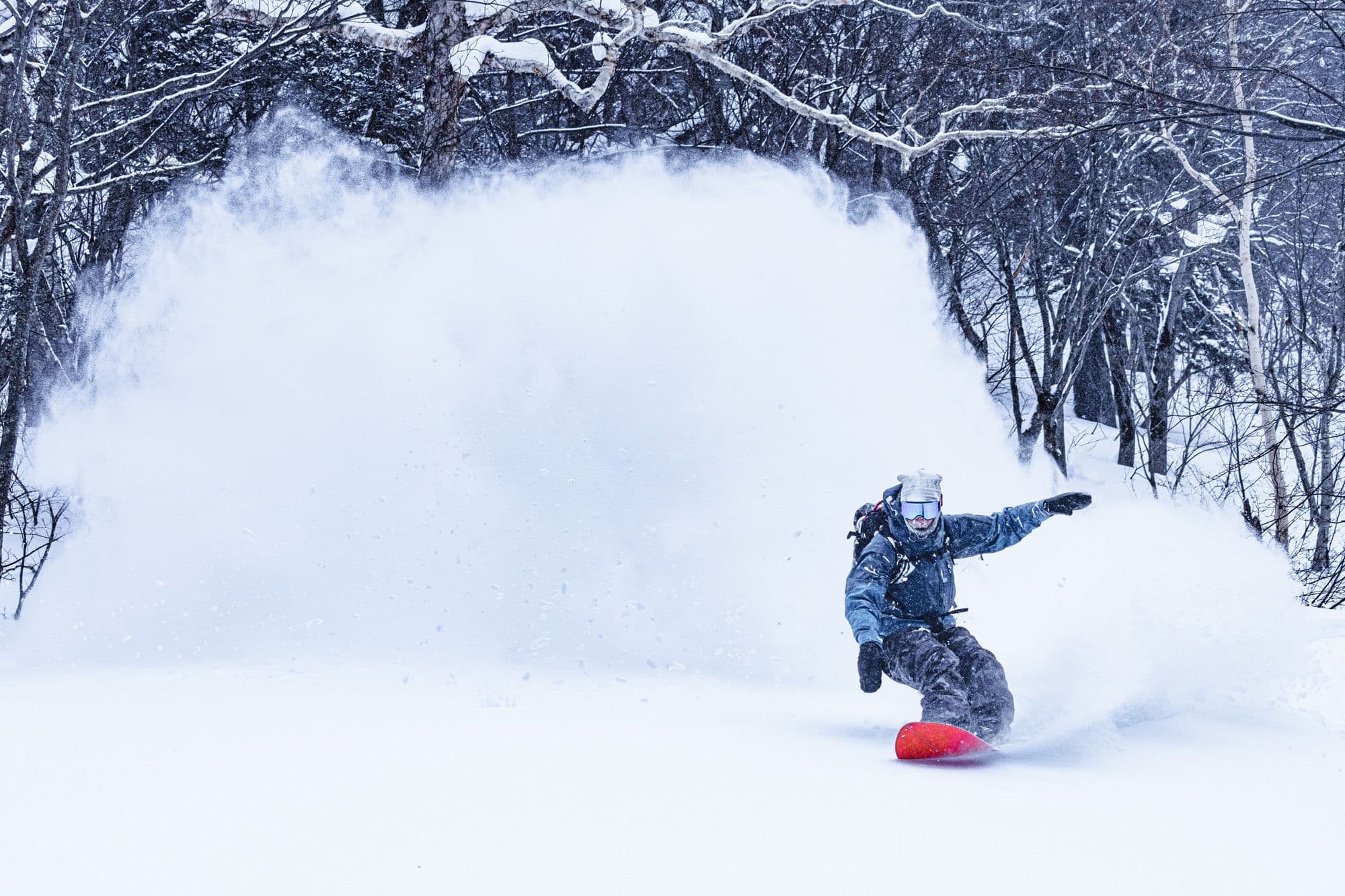
青森県
Aomori
Deep Snow, Empty Slopes, and a Whole Lot of Soul
Aomori is where winter digs in and refuses to leave — in the best possible way. Think cold Siberian storms crossing the Sea of Japan, unloading on volcanic peaks, and settling into old-growth beech forests that ski like a dream. It’s the far north of Honshu, with a raw, soulful vibe: steaming onsens after storm days, seafood bowls that put you back together, and locals who’ve been riding these mountains long before “Japow” became a hashtag. When it’s on, you’ll be floating through legit champagne pow and wondering why you didn’t come sooner.
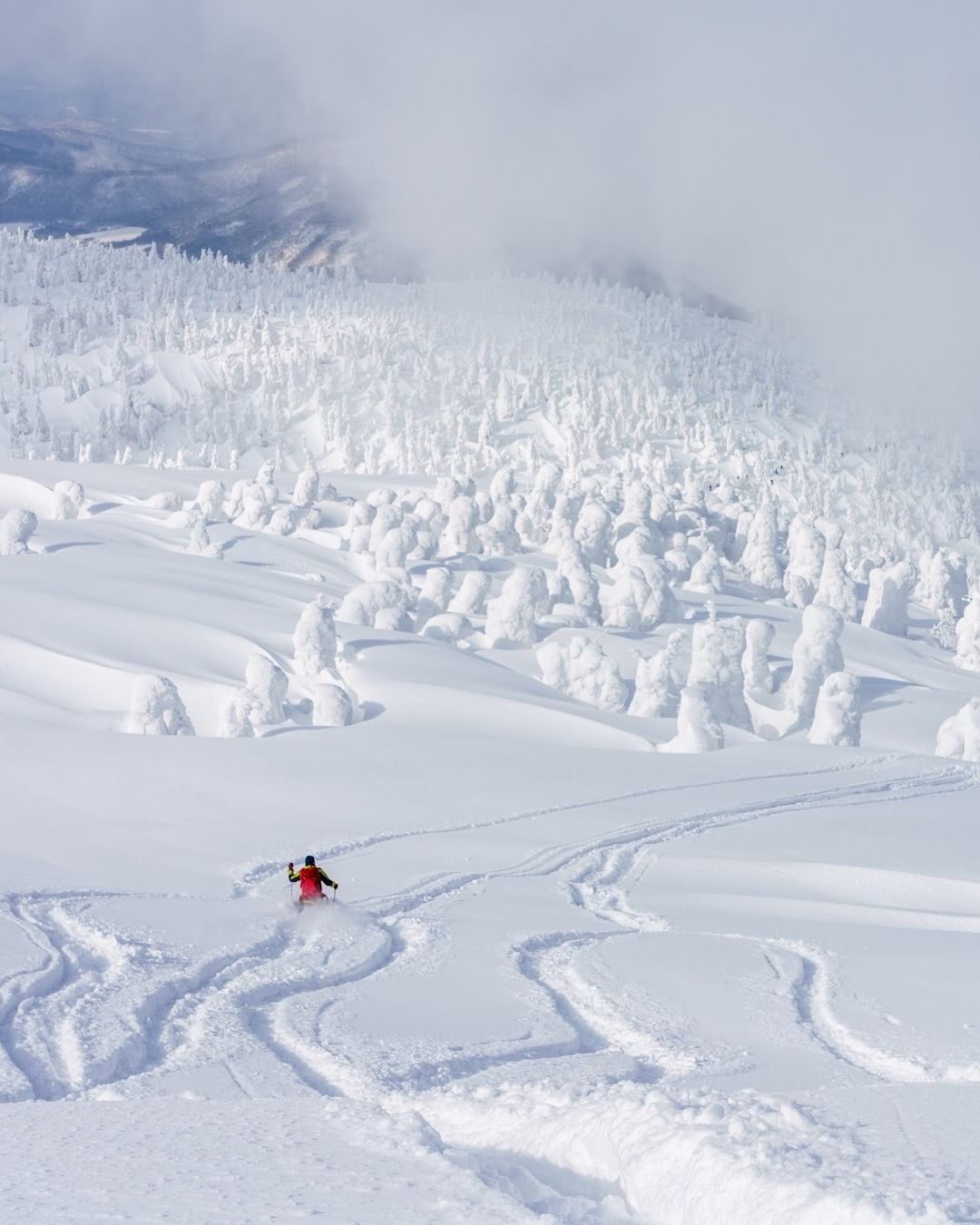
Terrain-wise, Aomori is tailor-made for upper-intermediate to advanced riders. Hakkōda is the headliner — a single ropeway into a vast alpine-and-trees playground that rewards respect, timing, and proper gear. On the other side of the prefecture, Aomori Spring stacks groomers, tree shots, and sidecountry hits off Mt Iwaki with a storm-chaser’s line of sight to the coast. Smaller hills like Owani Onsen and Moya Hills round out the mix when you want night turns or a mellower day. On a deep morning there’s only one rule: no friends on a powder day.
Travel here feels like an adventure without the chaos. Fly into Aomori (AOJ) or ride the Shinkansen to Shin-Aomori, grab a rental car, and base yourself smart. Aomori City is the easiest hub for Hakkōda day missions and classic izakaya nights; Hirosaki brings castle-town charm and quick access to Aomori Spring; Ajigasawa sits right on the Sea of Japan for storm watching and quiet onsen hotels. Wherever you stay, you’re here for the same thing — fresh tracks, deep culture, and a slower, friendlier pace than the big-name resorts up north.
Why Aomori? Because it punches way above its weight. The snowfall is real, the quality stays crisp thanks to latitude and elevation, and the tree skiing is as good as anywhere in Japan. Add hot-spring institutions like Sukayu Onsen, road-side snow walls, and seafood that tastes like it swam onto your plate, and you’ve got a powder trip with serious character.
Insider tip: Rent a car with proper winter tires and chase the storm lines — split days between Hakkōda and Aomori Spring to keep options open when wind or ropeway holds hit.
All Aomori Reviews

Aomori Spring
Sea-view powder, beech forests, and sneaky stashes on Mt Iwaki
8.7
Hakkoda
A Powder Hunter's Dream — Not For The Faint of Heart
9.3
Hyakuzawa
Tsugaru Fuji’s storm-day hideaway
8.1
Moya Hills
A city-side pow playground with big Tohoku vibes
8.3
Owani Onsen
A mellow Tsugaru hill with sneaky stashes and hot-spring vibes
8.4
Dial in your trip
Use the categories below to find the resort vibe that fits your crew — from storm-day trees to night turns with the kids, and everything in between.
Top Resorts by Snowfall
Where the storms stack it deepest.
Uncrowded Resorts
Powder without the panic or queues.
Top Resorts by Ability
Browse by challenge: confident greens to expert lines.
Tree Skiing
Beech glades, natural fall-lines, storm-day hero snow.
Big Mountain Vertical
Long drops, sustained pitches, leg-burn guaranteed.
Family Friendly
Gentle zones, easy rentals, stress-free hot cocoa.
Night Skiing
Floodlit groomers and sneaky refills after dark.
Best Value Resorts
Fair lift ticket prices, max smiles per yen.
Powder Hunter’s Choice
Frequent resets, fewer tracks, storm-smart terrain.
Getting There
- Fly or rail in: Daily flights to Aomori Airport (AOJ), or ride the Tōhoku Shinkansen to Shin-Aomori (about 3–3.5 hrs from Tokyo), then switch to wheels.
- Rent a car (recommended): Go 4WD with studless winter tires. It’s the easiest way to pivot between Hakkōda, Aomori Spring, and night options when storms shuffle the deck.
- Typical drive times: Aomori City → Hakkōda Ropeway: ~40–60 min. Shin-Aomori → Hakkōda: ~50–70 min. Hirosaki/Ajigasawa → Aomori Spring: ~45–70 min.
- Buses & shuttles: Winter buses run to Hakkōda Ropeway from Aomori Station/Shin-Aomori; some hotels operate shuttles to Aomori Spring. Schedules are limited—check times the night before.
- ETC & maps: Grab an ETC toll card and download offline maps; rural signal can be spotty during storms.
- Storm reality check: Wind can pause the Hakkōda ropeway. Keep a Plan B (Aomori Spring or local hills) so you still score turns.
- Parking: Generally free and easy, but ropeway lots can fill early on deep days—set the alarm and beat the pow rush.
When to Go
- Late December – early January: Deepening base, quieter slopes, festive vibe.
- January – mid-February (prime): Cold, frequent dumps, best quality trees and storm riding.
- Late February – March: Still consistent storms with more bluebird windows; great for backcountry tours.
- April bonus: Spring pow surprises up high and smooth corn laps when temps swing.
- Wind watch: Hakkōda ropeway can pause in big blows — keep flexible plans.
Money & Logistics
- Getting there: Fly to Aomori (AOJ) or take the Shinkansen to Shin-Aomori, then drive 30–90 minutes to resorts.
- Car is king: Reserve a 4WD with studless tires; bring an offline map and an E-Toll card if possible.
- Lift tickets: Generally cheaper than Hokkaido’s marquee hills; cash or IC card often accepted, but carry some yen.
- Safety gear: For Hakkōda and sidecountry anywhere here, pack avi kit, skins (optional but useful), radio, and know how to use them.
- Storm proofing: Book stays with onsen + dinner and you’ll love even the wildest weather days.
Language & Etiquette
- English is limited: A few phrases go far — arigatō, onegaishimasu, sumimasen.
- Onsen rules: Wash first, no swimsuits, keep towels out of the water.
- Tree respect: Obey closures; go with a guide if you’re new to Hakkōda routes.
- Lift lines: Keep it orderly, merge politely, boards off the snow when you can.
- Leave no trace: Pack out snack wrappers; keep the mountains clean.
Nearby Adventures
- Hakkōda ↔ Aomori Spring: Classic two-base combo — pick the day’s winner by wind and snow.
- Owani Onsen & Moya Hills: Fun night skiing or shorter storm-day sessions.
- Sukayu Onsen: Post-storm soak at one of Japan’s most atmospheric hot springs.
- Hirosaki: Castle park strolls, cider and apple treats, laid-back nightlife.
- Coastal reset: Ajigasawa and Aomori Bay seafood markets after a big day.
